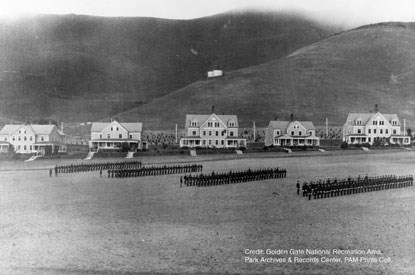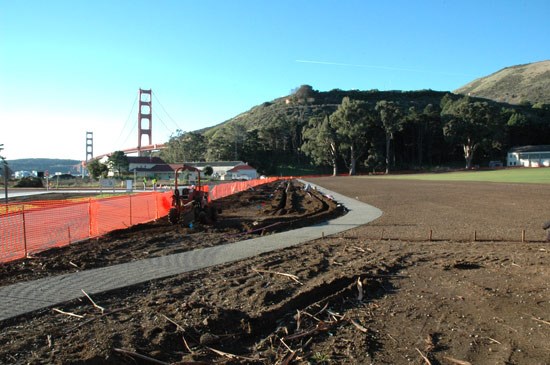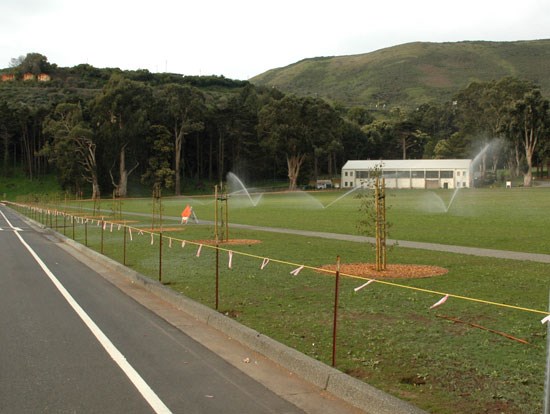
GGNRA Archives, NPS Historic Center of the Post 
NPS photo Definition of Restoration What is “restoration?” Restoration of a building or landscape identifies a “snap shot” in time of when the building or landscape was the most important and/or represented the highest level of historic integrity. Landscape research identified that after 1939, the army stopped using the parade ground for its original purpose and also began to construct things on the site that diminished its historic integrity. In order to restore the parade ground back to its original historic configuration, the National Park Service designed the new project to create the general appearance and characteristics of the site from around 1939. 
NPS photo To “restore” the parade ground, the plan called for the removal of items that detract from the parade ground’s historic character, like the large asphalt parking lot, associated with the Bay Area Discovery Museum, and the long searchlight building at the bottom of the parade ground. A baseball back-stop and bleachers were also removed. A new sidewalk and bike lanes along Center Road, the historic grand entrance into Fort Baker, make the street more pedestrian and biker-friendly. Large, full-shaped trees, Silver Dollar Eucalyptus, (Eucalyptus polyanthemos) once again march along both sides of the street. An irrigation system, connected to an on-site weather station, has been installed to maintain the new grass and trees until they can grow without additional water. A careful visitor will notice that the new concrete sidewalk and curbs match the historic concrete work found in other areas of the post. 
NPS photo Identification of Appropriate Vegetation 
NPS photo New street trees were selected, including Eucalyptus maculata (Spotted Gum) and Tristaniopsis laurina (Water Gum) because their shape and growth pattern matched that of the original trees. They should grow to about 35 feet in height. These trees were planted along curving Murray Circle to recreate the historic pattern. Historic locations of these trees were determined through historic maps, drawings and photographs. The large fir tree near the top of the parade ground was planted around 35 years ago, along with a brass monument, by the U.S. Army 91st Division whose patch displays a pine tree. The division called Fort Baker home for many years. 
NPS photo 
NPS photo To learn more about other Golden Gate National Recreation Area preservation projects, please visit the Historic Preservation page. |
Last updated: March 31, 2015
